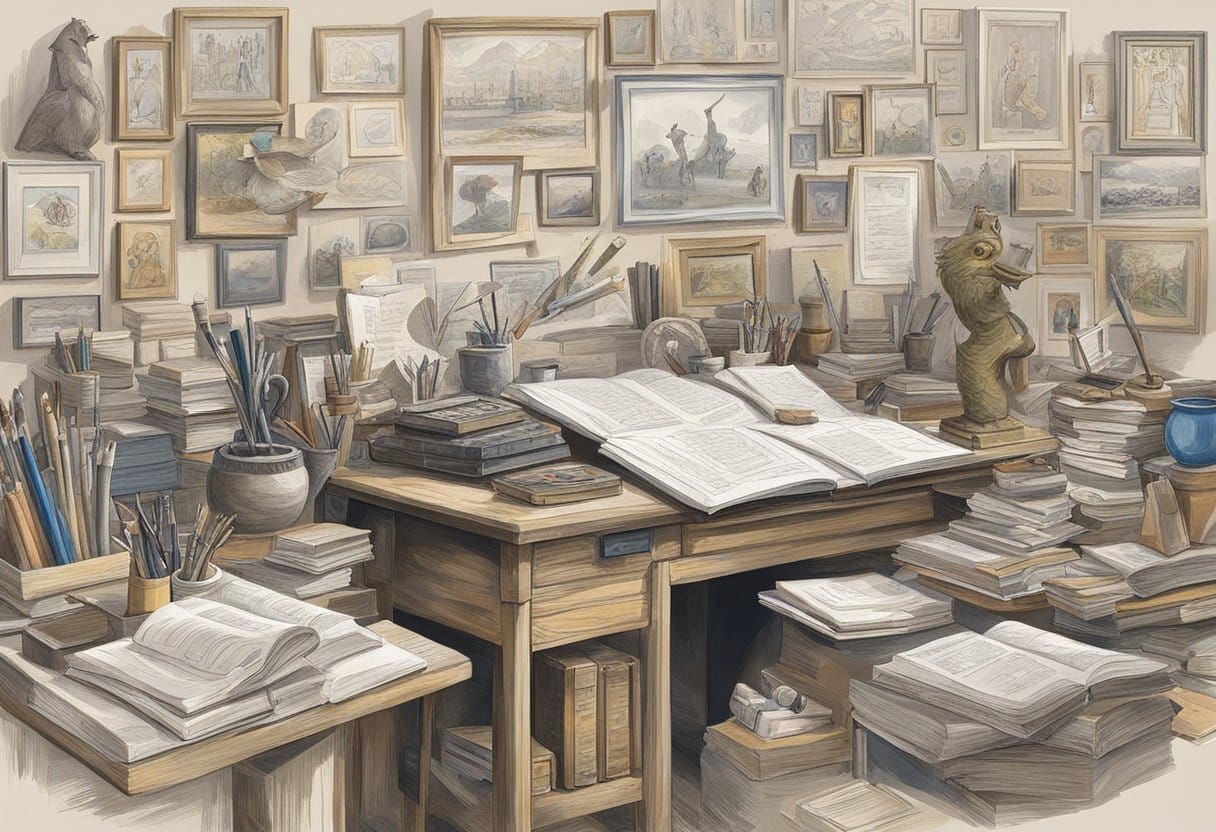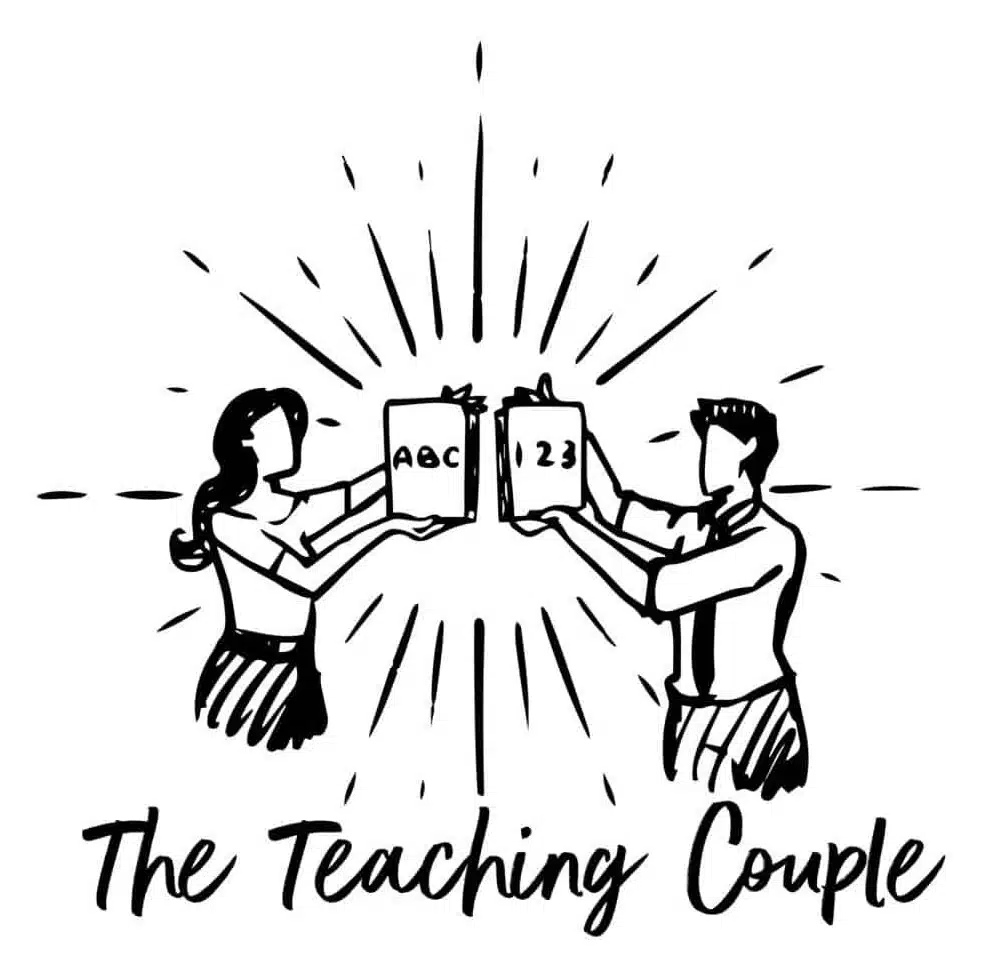Ekphrastic poetry is a form of poetry that describes a work of art, such as a painting, sculpture, or photograph. This type of poetry is often used in classrooms to teach students how to interpret and analyze visual art, as well as to encourage creativity and self-expression.
Teaching ekphrastic poetry requires an understanding of the form and its history, as well as an ability to guide students through the process of analyzing and responding to visual art.
Related: For more, check out our article on How To Teach Sestina Poetry here.

Understanding ekphrasis is an important first step in teaching ekphrastic poetry. Ekphrasis is a literary description of a visual work of art, and it has a long history in poetry and literature.
The term comes from the Greek word “ekphrasis,” which means “description,” and it has been used by poets and writers for centuries to describe works of art in words.
In teaching ekphrastic poetry, it is important to help students understand the relationship between the visual image and the written description, and to encourage them to use their own creativity and imagination to respond to the art.
Analysing ekphrastic poems is another important step in teaching ekphrastic poetry. Students need to be able to identify the elements of the poem that are related to the art, such as the imagery, symbolism, and tone.
They also need to be able to analyze the poem’s structure and form, and to understand how the poet uses language to create meaning and convey emotion. By helping students to analyze ekphrastic poems, teachers can help them to understand the art and to develop their own skills as writers.
Key Takeaways
- Ekphrastic poetry is a form of poetry that describes a work of art, and it is often used in classrooms to teach students how to interpret and analyze visual art.
- Understanding ekphrasis is an important first step in teaching ekphrastic poetry, and teachers should help students to understand the relationship between the visual image and the written description.
- Analysing ekphrastic poems is another important step in teaching ekphrastic poetry, and teachers should help students to identify the elements of the poem that are related to the art, and to analyze the poem’s structure and form.
Related: For more, check out our article on How To Teach Cinquain Poetry here.
Understanding Ekphrasis

Historical Context
The term “ekphrasis” comes from the Greek word “ekphrasis,” which means “description.” It refers to a literary genre that involves the vivid description of a work of art.
The earliest examples of ekphrasis can be found in Homer’s epic poem, The Iliad, where the poet describes the intricate details of Achilles’ shield.
Ekphrasis became popular during the Hellenistic period, and it continued to be a significant literary form in the Roman and Byzantine empires.
During the Renaissance, ekphrasis was used to describe paintings and sculptures, and it became a popular way for poets to showcase their skills.
Defining Ekphrastic Poetry
Ekphrastic poetry is a type of poetry that describes a work of art. It can be a painting, sculpture, or any other form of visual art. The poet uses vivid and detailed language to describe the artwork and to create an emotional response in the reader.
One of the most famous examples of ekphrastic poetry is John Keats’ “Ode on a Grecian Urn.” In this poem, Keats describes an ancient Greek urn and the figures depicted on it.
He uses the urn as a metaphor for the beauty and permanence of art, and he explores the relationship between art and life.
In summary, Ekphrasis is a literary genre that involves the vivid description of a work of art, and Ekphrastic poetry is a type of poetry that describes a work of art. It has a rich historical context dating back to the Greek and Roman empires and continues to be a popular literary form today.
Related: For more, check out our article on How To Teach Elegy Poetry here.
Analysing Ekphrastic Poems
When teaching Ekphrastic poetry, it is essential to analyze the poem and understand the language, imagery, tone, and themes used. This section will discuss some of the key elements to consider when analyzing Ekphrastic poems.
Language and Imagery
Language and imagery are crucial elements in Ekphrastic poetry. The poet uses descriptive language to create a vivid image of the artwork, which helps the reader to visualize the artwork in their mind.
For example, William Carlos Williams’ poem “Landscape with the Fall of Icarus” describes the painting by Pieter Brueghel the Elder. The poem uses vivid language to describe the painting, such as “the edge of the sea concerned with itself” and “a splash quite unnoticed.”
Tone and Themes
The tone and themes of the poem are also essential to consider when analyzing Ekphrastic poetry. The tone of the poem can be reflective, contemplative, or critical.
The themes can range from beauty, love, and nature to darker themes such as death and loss. For example, in William Carlos Williams’ poem “Landscape with the Fall of Icarus,” the tone is reflective, and the theme is the insignificance of human life in the face of nature’s power.
The poem suggests that the fall of Icarus is not significant enough to disrupt the natural world around him.
In conclusion, analyzing Ekphrastic poems involves examining the language, imagery, tone, and themes of the poem. By understanding these elements, the reader can gain a deeper appreciation of the poem and the artwork it is describing.
Related: For more, check out our article on How To Teach Ballad Poetry here.
The Art of Writing Ekphrastic Poetry

Ekphrastic poetry is a form of poetry that is inspired by a work of art. It is a way of expressing one’s thoughts and emotions about a piece of art through words. Writing ekphrastic poetry can be a challenging but rewarding experience for both the writer and the reader.
In this section, we will explore the art of writing ekphrastic poetry, including finding inspiration and crafting the poem.
Finding Inspiration
The first step in writing ekphrastic poetry is finding inspiration. This can come from any form of art, including paintings, sculptures, photographs, and even music.
When choosing a piece of art, it is important to select one that resonates with you on a personal level. It should evoke an emotional response, whether it be joy, sadness, or confusion. Take time to study the artwork and consider its meaning and context.
Crafting the Poem
Once you have found your inspiration, it is time to begin crafting your poem. The writing process for ekphrastic poetry can vary depending on the writer’s style and preferences.
Some writers prefer to use figurative language, such as metaphors and similes, to describe the artwork. Others may choose to incorporate rhyme or follow a specific poetic form.
However, many ekphrastic poets prefer to use free verse, allowing the poem to flow naturally without the constraints of form.
When crafting the poem, it is important to consider the artwork’s visual elements, such as colour, texture, and composition. These elements can be used to create vivid imagery in the poem.
It is also important to consider the emotions and themes conveyed in the artwork and to incorporate them into the poem.
Writing ekphrastic poetry is a unique and rewarding experience that requires careful consideration and attention to detail. By finding inspiration in a piece of art and crafting a poem that reflects its meaning and emotion, writers can create a powerful and meaningful work of art in its own right.
Related: For more, check out our article on How To Teach Villanelle Poetry here.
Ekphrastic Poetry and Visual Art
Ekphrastic poetry is a genre of poetry that is inspired by visual art. It is a form of literary interpretation that allows the poet to explore the themes, emotions, and ideas of a piece of artwork. Visual art can include paintings, sculptures, and other forms of art that are created to be seen.
Interpreting Artwork
One of the key aspects of writing ekphrastic poetry is interpreting the artwork. The poet must examine the piece of art and determine what it means to them.
This involves looking at the visual elements of the artwork, including the colours, shapes, and lines, and considering how they contribute to the overall meaning of the piece.
For example, a poet writing ekphrastic poetry about Vincent van Gogh’s “Starry Night” might focus on the swirling lines and vibrant colours of the painting. They might interpret these elements as representing the turbulence and intensity of human emotions.
Describing Visual Elements
In order to write effective ekphrastic poetry, the poet must also be able to describe the visual elements of the artwork. This involves using language that conveys the texture, colour, and shape of the artwork.
For instance, a poet writing about a sculpture might use metaphors and similes to describe the way the light reflects off the surface of the sculpture. They might also use sensory language to describe the texture of the sculpture, such as “rough” or “smooth”.
Ekphrastic poetry is a powerful way to explore the themes and emotions of visual art. By interpreting the artwork and describing its visual elements, poets can create works of poetry that are both evocative and insightful.
Related: For more, check out our article on How To Teach Ode Poetry here.
Influence and Impact
Ekphrastic poetry has a significant influence and impact on the cultural and social relevance of poetry. It allows poets to explore deeper meanings and themes in visual art, and to bring attention to social issues through their writing.
American poet Terrance Hayes once said that ekphrastic poetry can “open up a conversation between the visual and the verbal.” This conversation can lead to a greater understanding of both the art and the poetry.
Cultural and Social Relevance
Ekphrastic poetry has a long history of cultural and social relevance. In ancient Greece, poets would often write about statues and paintings, bringing them to life through their words.
In modern times, ekphrastic poetry has been used to explore social issues such as race, gender, and politics. The Academy of American Poets has even created a section on their website dedicated to ekphrastic poetry that addresses social justice issues.
Related: For more, check out our article on How To Teach Tanka Poetry here.
Educational Value
Ekphrastic poetry also has significant educational value. It can be used to teach students about visual art, poetry, and how to make connections between the two.
Ekphrastic poetry can also help students develop empathy by encouraging them to put themselves in the shoes of the artist or subject of the artwork. This can be a valuable tool in meeting Common Core Standards for English Language Arts.
In conclusion, ekphrastic poetry has a significant influence and impact on the cultural and social relevance of poetry, as well as educational value. By exploring deeper meanings and themes in visual art, ekphrastic poetry can help us better understand the world around us.

